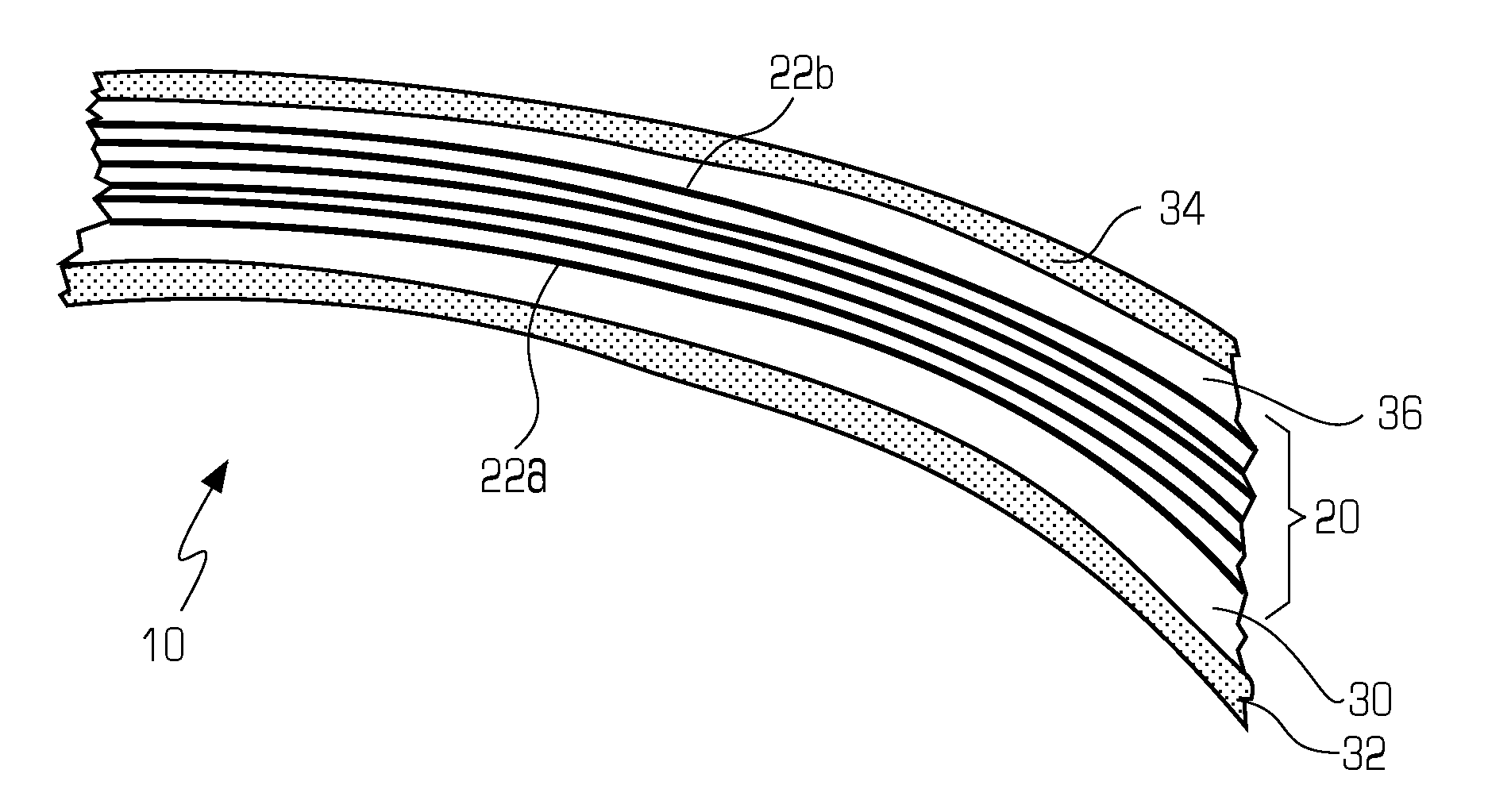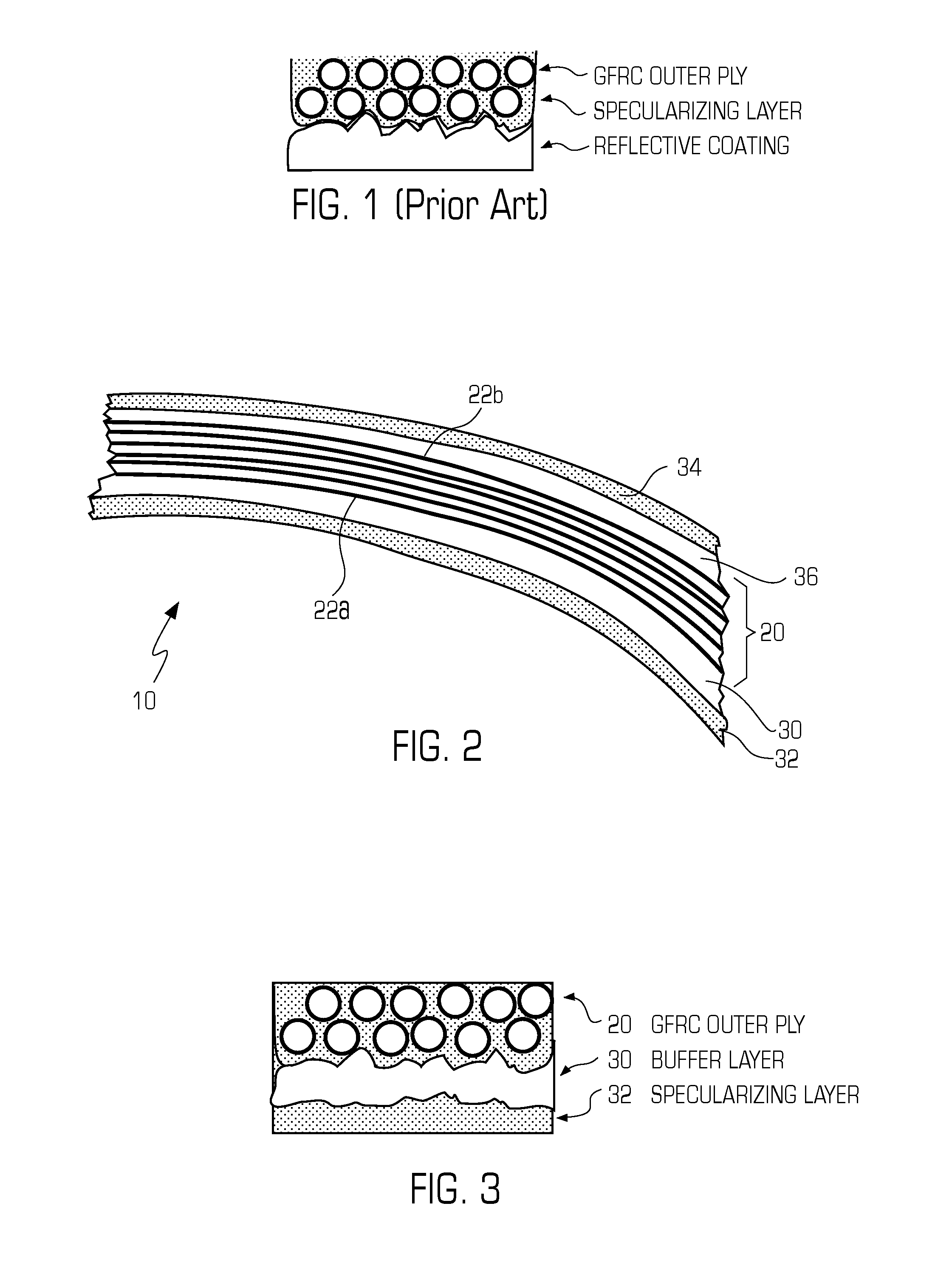Mirror And A Method Of Manufacturing Thereof
- Summary
- Abstract
- Description
- Claims
- Application Information
AI Technical Summary
Benefits of technology
Problems solved by technology
Method used
Image
Examples
Embodiment Construction
[0012]Referring to FIG. 2 there is shown a cross-sectional view of a mirror 10 of the present invention. The mirror 10 comprises a substrate 20. The substrate 20 has a first surface 22a and a second surface 22b, opposite the first surface 22a. The substrate 20 serves to provide the shape or contour of the mirror 10. The contour can be spherical, aspherical, cylindrical, cylindrical aspheric, planar, or any other shape. The substrate 20 is of a material which provides thermo-mechanical stability, low mass, and stiffness. It can be made from metals, composite sandwich structures, plastic or in the preferred embodiment Graphite Fiber Reinforced Composite (GFRC). In the preferred embodiment, the substrate 20 is a six layer GFRC laminate composite in which the plies or layers are uni-directional plies, arranged in a sequential direction layup to provide quasi-isotropic properties and a balanced laminate, such as (0 / 60 / −60 / −60 / 60 / 0) with each ply comprising a 0.04 mm layer of graphite fib...
PUM
| Property | Measurement | Unit |
|---|---|---|
| Moldable | aaaaa | aaaaa |
| Shape | aaaaa | aaaaa |
| Stability | aaaaa | aaaaa |
Abstract
Description
Claims
Application Information
 Login to View More
Login to View More - R&D
- Intellectual Property
- Life Sciences
- Materials
- Tech Scout
- Unparalleled Data Quality
- Higher Quality Content
- 60% Fewer Hallucinations
Browse by: Latest US Patents, China's latest patents, Technical Efficacy Thesaurus, Application Domain, Technology Topic, Popular Technical Reports.
© 2025 PatSnap. All rights reserved.Legal|Privacy policy|Modern Slavery Act Transparency Statement|Sitemap|About US| Contact US: help@patsnap.com


